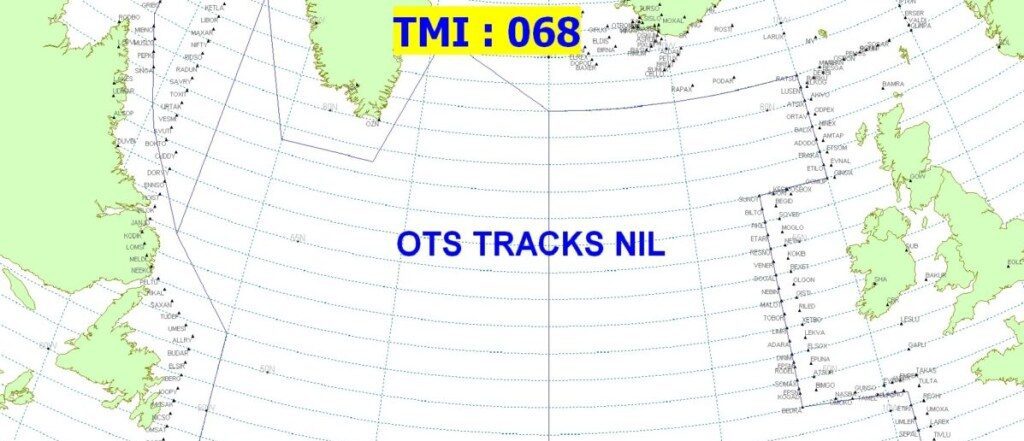
Starting March 1, oceanic air traffic controllers will eliminate the Organized Track Structure (OTS) in the North Atlantic airspace for flights at or below FL330. (NATS UK)
Operators flying at or below FL330 (33,000 feet) between Europe and North America will be able to file flight plans outside of the North Atlantic Organized Track Structure (OTS) system starting March 1.
According to a Feb. 3 blog authored by Jacob Young, manager of operational performance, NATS UK, the decision to eliminate the OTS tracks at or below FL330 has been discussed by air navigation service providers (ANSPs) managing the oceanic airspace on both sides of the Atlantic Ocean for several years. Now, after introducing trials of OTS track system elimination during periods of low air traffic volume last year, air traffic controllers and airlines are ready to shift to the new at or below FL330 policy.
Young describes the North Atlantic OTS as an “invisible multi-lane motorway that connects Europe and North America.” In the oceanic airspace for aircraft flying from North America to the UK and Europe, since the 1960s, air traffic controllers on both sides have used 12 tracks that change twice daily to account for winds.
When airlines file flight plans, controllers clearing them from UK or Canadian airspace and into the oceanic routes try their best to slot them into the track that matches their intended trajectory. These tracks are sets of waypoints within the North Atlantic airspace that try to take advantage of the east- and westbound jet streams.
Last year, the combination of Aireon’s space-based ADS-B for North Atlantic surveillance and historically low levels of daily flights in the airspace amid the COVID-19 pandemic provided an opportunity for NATS and NAV Canada to eliminate the track system on certain days. This also allowed controllers and airlines to study the changes and benefits that the track elimination could provide to airlines that use them.
“In total, [in 2021] we saw 20 days without a single track being published,” Young writes. “We’re now working with 15 of them to analyze the results and simulate ‘OTS Nil’ on busier traffic days to understand if the benefits to them in terms of time, CO2 emissions and fuel burn would make a permanent change worthwhile.”
Young notes that operators flying at or below FL330 have never previously had any restrictions on flight planning in relation to individual route crossings in the North Atlantic. However, NATS UK believes the change could be beneficial to airlines that have internal systems and procedures that prevent them filing individually when the tracks are active with “active flight levels.”
“From our perspective, it’s certainly possible to make the North Atlantic completely track-free with just some minor procedural and system changes required,” Young writes. “Ultimately, it needs to be an airline-led decision. That analysis work is on-going, but we are now able to announce some more immediate changes which will form the first step towards the reduction of the OTS.”